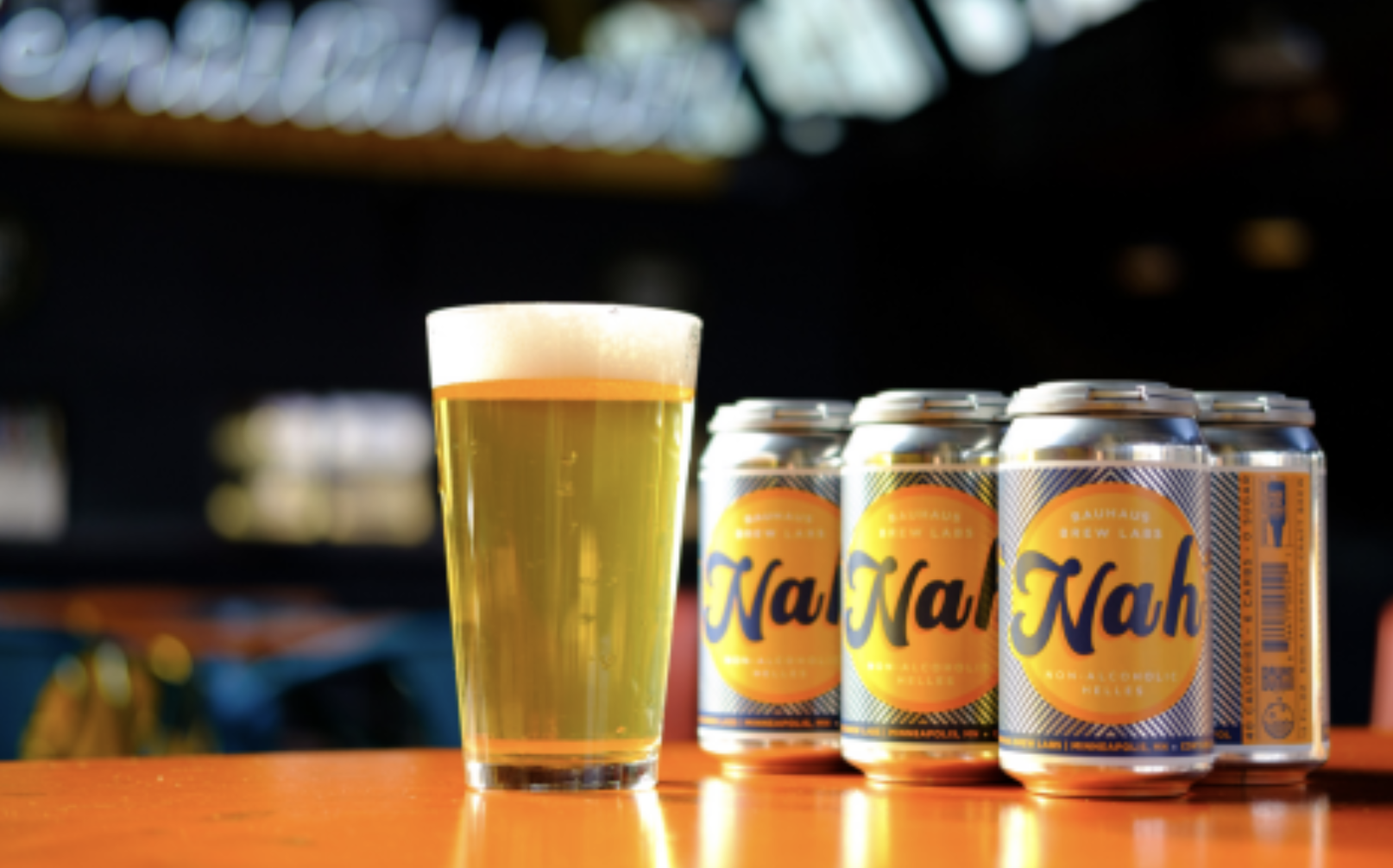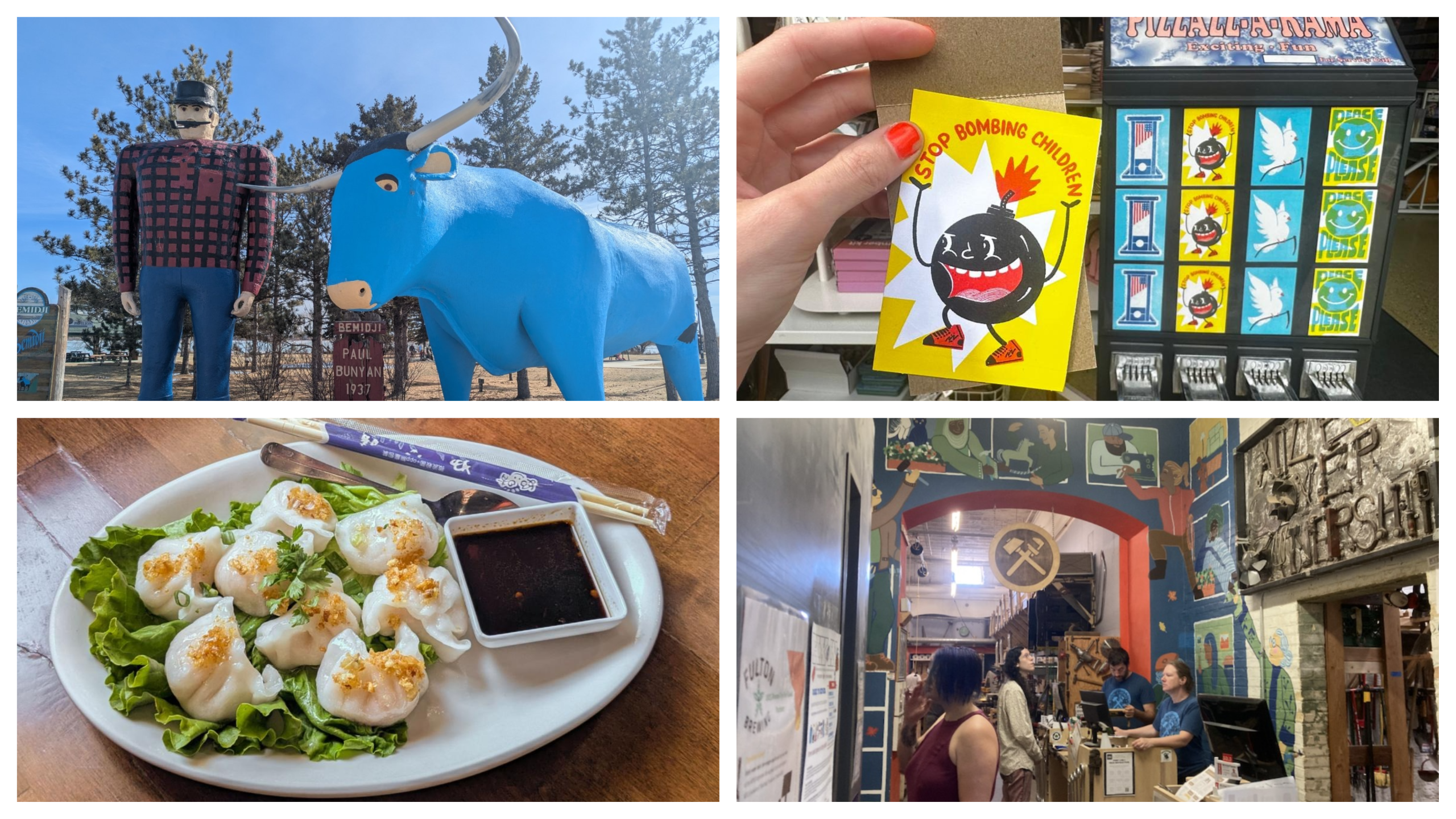When I sat down for a preliminary interview for the job of City Pages food and drink editor back in 2017, I was questioned about the usual stuff: my past writing, my editing work, my management style. Then there were the more food-specific queries—did I have any allergies or dietary restrictions that would make covering the restaurant industry difficult? I wasn’t a vegetarian, right?
“Oh, one other thing,” I remember one editor saying. “Do you like to drink? The Twin Cities… well, it’s a big drinking town.”
A legal question to ask a candidate? Maybe not! But between the ubiquitous happy hour deals, the robust craft beer scene, the 100-year-old St. Paul dives, and the nationally lauded cocktail hot spots, I quickly learned he was right—people here really liked to drink, a fact that was backed up, year after year, by somewhat alarming statistics.
Over time, though, something started shifting. Mocktails became de rigueur, until it was no longer a stretch to compile a robust list of the best ones around. In January 2020, Marvel Bar, then near the pinnacle of cool cocktail bars in town, introduced a “dry” drink menu and began “minimizing alcohol’s visible impact in the space.” In 2016, Minnesotans Paul Pirner and Jeff Hollander founded one of the first NA craft breweries in the country, Hairless Dog Brewing, and Bauhaus Brew Labs launched its now-popular Nah line of NA beers in 2019, long before Connecticut’s Athletic Brewing Co. and California's Best Day Brewing became household names.
“We’ve had a brand in the market for a little over four years now, and so it’s really interesting to see all the market statistics about how NA is growing,” says Matt Schwandt, president and CEO of Bauhaus in northeast Minneapolis, with a chuckle. “It kind of feels like the market is catching up to us.”
These days, craft NA beer is very much A Thing. Bauhaus has been joined by a bunch of other “traditional” Minnesota breweries—from Surly and Summit to Arbeiter and Ursa Minor—that have added NA beer lines to their rosters. Gone are the days of downing O’Doul’s; in 2024, the beer drinker looking to abstain (or just cut back) has options, many of them made locally.
That’s not the case in every craft beer market, however. So what makes Minnesota different? We asked local breweries to help explain the local near-beer renaissance.
NA beer isn’t just for Dry January. Nationwide, nonalcoholic beer sales are “soaring,” according to the Wall Street Journal, averaging 31% growth between 2020 and 2023. While sales of alcoholic beer, cider, and seltzer spiked during the early days of the pandemic and then stagnated, nonalcoholic numbers have continued to climb. What’s more, executives at AB InBev told the WSJ that they estimate 60% of NA beer sales are “incremental,” meaning new growth that’s not replacing existing sales.
Those macro numbers check out on a more micro level. Bauhaus started selling nonalcoholic Nah in 2019, a few years after Schwandt was diagnosed with acute pancreatitis and told by doctors, in no uncertain terms, that he needed to quit drinking.
“Nah has grown year over year, consistently,” says Schwandt, who’s proudly sober today. “And that’s about the only brand that we produce that’s had that happen.”
First came Nah’s Munich-style light lager, which has since been joined by the Nah Pink Guava Sour. Both are currently available year-round, and earlier this month, Bauhaus released a Nah hazy IPA they’re hoping will be a regular offering as well. They’ve brewed a Nah hefeweizen, a blonde ale, and an amber ale, and they’ve got a nonalcoholic stout in the works.
“What we’d like to do is have a light ale or lager, a sour, an IPA, and a stout, and eventually put them in a mixed pack,” Schwandt says. It’s an ambitious goal, and a personal one for Schwandt and his fellow founders, many of whom have also embraced sobriety over the last few years. “I don’t have any judgment towards people who consume alcohol,” he says—he still operates a brewery, after all. “But I think that, on the whole, people moderating or limiting their consumption is just a societal good.”
That doesn’t mean that Nah is a huge part of Bauhaus’s portfolio. The overwhelming number of beverages coming out of the Northeast brewery contain alcohol, and the figures seem unlikely to flip anytime soon. Still, growth is growth, and other breweries are seeing their NA numbers climb as well.
Take Arbeiter Brewing Co. in south Minneapolis, which has brewed a handful of NA beers since launching in late 2020. (They also have Bauhaus’s Nah on tap—you can do that with NA beers, unlike regular beers, another fun collaborative opportunity for local breweries.) Garth Blomberg, co-founder and creative director at Arbeiter, crunched some numbers for us, and says that in December 2022, Arbeiter’s Longfellow taproom only sold 87 NA beers. By December 2023, that number climbed to 170.
“So that number has doubled year over year,” Blomberg says. Halfway through January 2024, the brewery is on track to double its NA sales from January 2023.
“Overall, it’s not a huge percentage [of total sales],” Blomberg says. “But just the physical units being served, it’s in the hundreds… that adds up. That’s a lot of people drinking NA, and wanting it, and coming here for that.”
It could be an “if you brew it, they will chug” situation. For a while now, Indeed Brewing Co. has offered an NA pils (Pils Zero) at the taproom. Chief Business Officer Ryan Bandy says he likes it just fine, but he’ll be the first to admit: It tastes kinda like the NA beers on the macro market.
This winter, an NA version of Indeed’s Pistachio Cream Ale joined the rotation, “And it’s been popular as hell,” Bandy chuckles. “I think it kind of goes back to: It tastes crafty. It’s a craft beer. It has a weird ingredient, the cream ale is made well, and it’s NA.”
Bandy thinks craft brewers have an ability to differentiate themselves from the NAs made by big beer brands like AB InBev, whose Anheuser-Busch subsidiary has produced O'Doul's since 1990. They don’t have to stick to lagers and pilsners, styles that macro breweries bank on because they’re universally agreeable and relatively easy to make an NA version of. Craft breweries can explore and expand what NA beer can be—experimenting with flavors and ingredients like they have for alcoholic beer. “It’s our job, as craft breweries, to push that,” he says. “It’s kind of our job to push those boundaries and try to figure out what’s next.”
He notes that while NA beer sales may be a small percentage of overall beer sales nationally right now—0.9% of total sales by volume in 2022—that means there’s a lot of room for growth. He points to Germany, where a whopping 10% of all beer consumed will soon be non-alcoholic.
“You have to assume we’ll go towards that number over the next however many years,” Bandy says. “I think that’s part of what the craft movement is trying to figure out. It’s like, are we a part of that [growth]? I think we are.”
If you’re a craft brewery, this all sounds like good news, right? Here’s a way to claw back some of the market share as U.S. craft beer sales continue to decline, and at a crucial moment in time, given the popularity of NA options among younger drinkers.
But not every craft beer producer is keen to start brewing NA beer, and the discourse reaches a fever pitch each new year as brewers stare down 31 days during which customers might choose to temporarily teetotal. Beverage industry journalist Dave Infante has seen an “informal backlash” against Dry January unfold over the last few years, with brewers turning to social media to either politely remind customers they still need support during the month or share passive-aggressive gripes about declining sales.
(Others are less subtle—can we interest you in an imperial IPA with the name “Fuck Dry January”?)
Infante thinks it’s no coincidence that some craft breweries are “confronting” the trend, as the website Good Beer Hunting put it. For the first time in a long time, craft beer sales have plateaued, and he adds that there’s no real growth opportunity in the industry.
“That’s really alarming and daunting, I think—scary to a lot of craft brewery owners that opened during the much more halcyon days of the industry,” Infante says. “I think you see that coming out a little bit in terms of how some of them communicate around Dry January.”
But it also seems a little self-defeating—he quips that you’re not going to “bully” people into drinking. More than once, he’s written columns encouraging brewers to quit their bellyachin’ about the sober-curious movement and simply make nonalcoholic beer or hop water.
“It’s great to hear that a lot of Twin Cities breweries and Minnesota breweries are taking those opportunities… but a lot of them aren’t, man,” Infante chuckles. “And I just genuinely don’t understand it.”
There are a number of factors that may have made Minnesota’s craft breweries more likely to dive into nonalcoholic beer.
On the production side, local breweries’ NA capabilities are bolstered by the presence of ABV Technology in St. Paul, which more or less magically zaps beverages like beer, wine, and seltzer to remove the alcohol. That means breweries like Bauhaus and Indeed don’t need to do any extra trickery in the brewhouse—they can make beer, same as they always do, and send it off to ABV, which fires up its Equalizer and returns to them with an NA product. (The company can also sell the extracted alcohol back to breweries for a quick and easy hard seltzer base.)
On the distribution side, numerous nonalcoholic bottle shops like Marigold and Zero Proof have sprouted up throughout Minneapolis and St. Paul. Schwandt at Bauhaus says the Twin Cities has the highest number of NA bottle shops per capita in the nation right now, making it easier to find a market for Nah and other locally made NA beers. And brewers have a big cheerleader in shop owners like Marigold’s Erin Flavin, who makes a point of getting every locally made NA product she can find on shelves.
“We talk so intimately with each customer that comes in here,” Flavin says. “I walk people through the store to show them each and every thing that is local.”
It’s also possible that there’s less reticence to expand into non-traditional beverages thanks to Minnesota’s unusual marijuana laws. The proliferation of brewery-made THC seltzers beginning in 2022 blurred the lines between “brewery” and “beverage producer,” with tremendous sales advantages for craft brewers. Infante speculates that there’s a shared attitude amongst brewers who don’t want to move away from their core product; in Minnesota, there’s less ideological hand-wringing about what expanding into drinks other than beer means.
Put it all together—ABV, NA bottle shops, a historically hard-drinking culture that might be prone to joining the overall trend away from alcohol—and you get an ecosystem that’s overwhelmingly friendly towards NA beers.
Which is not to say production of these alcohol-free beverages is without its challenges. Every brewery we spoke to for this story mentioned the cost, which can be steep. ABV Technology is an amazing company to have in your backyard, but they’re not working for free. “By the time we get it back… it’s a very expensive beer by that point,” Bandy at Indeed says. It’s why their NA offerings are taproom only—adding distro to the already steep production price would make their margins slimmer yet.
Making a shelf-stable product is another hurdle, as alcohol plays a critical role in stabilizing beverages. Bauhaus pasteurizes Nah to boost its shelf life, “but we don’t have a pasteurizer in house, so we’re actually farming that service out to a third party,” Schwandt says. “It adds to the cost, but it’s really, I think, the only safe way to do it.”
That makes scaling the product tricky, which is why Nah, for now, is only available locally. “I really think that Nah could be a national brand,” Schwandt says. But to get to that point, they’ll need to stabilize the beer on a much larger scale.
Every brewery we spoke to also shared a feeling that offering NA beers is simply the right thing to do. Schwandt says one of the hardest things about sobriety was figuring out how to socialize and connect with people again. He wants everyone, no matter their current relationship with alcohol, to feel welcome to meet friends for a drink in their taproom.
“We kind of come at it from a point of inclusivity,” says Arbeiter’s Blomberg. “Like, why alienate anyone from coming to your establishment? The older we get, I know more and more people who have changed their lifestyles—which is a good thing.”
“At the end of the day, it’s all about bringing more people into craft breweries,” says Bandy at Indeed. “To be a brewery that cares about diversity, you need diverse beverages, too.”







